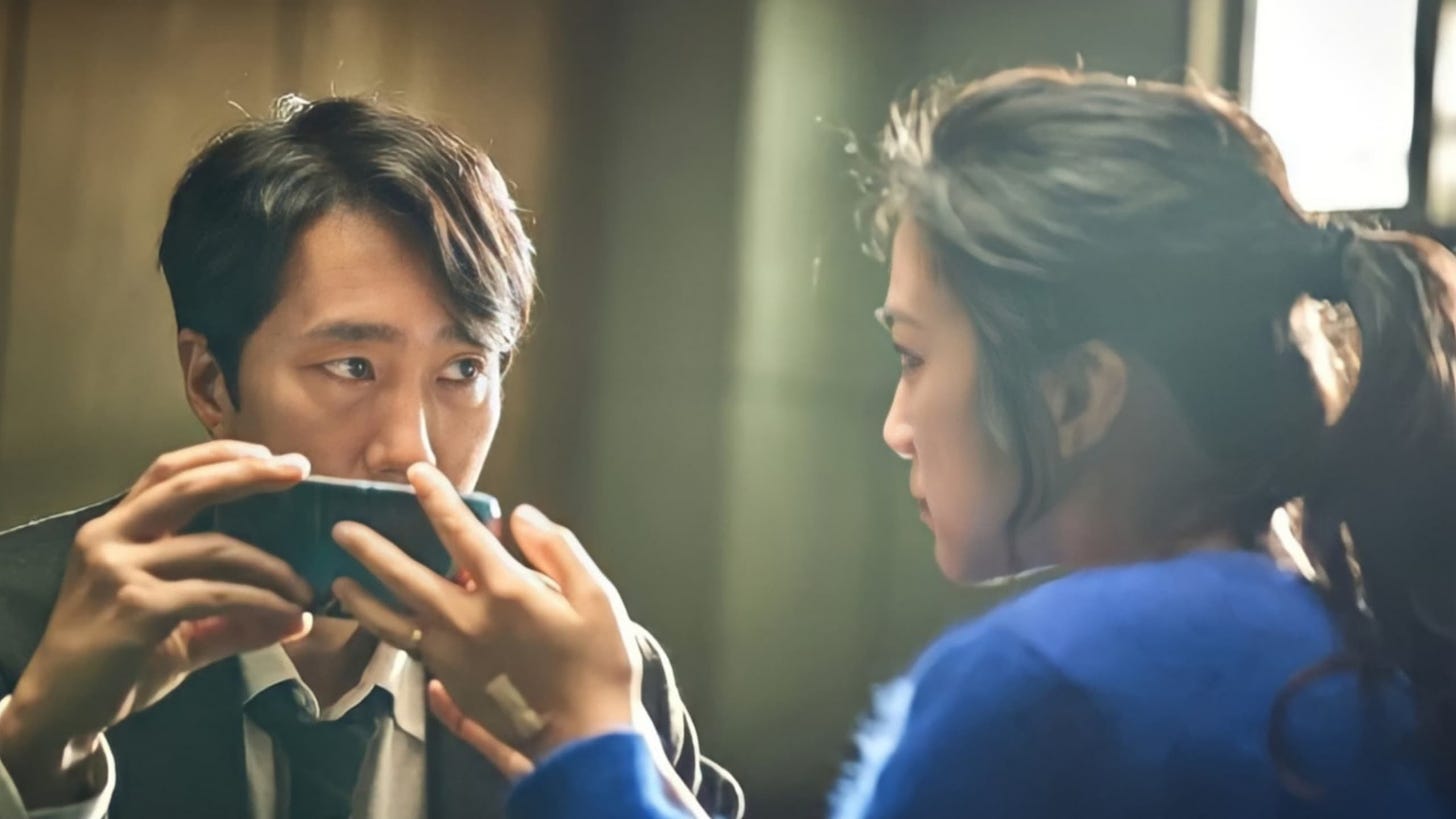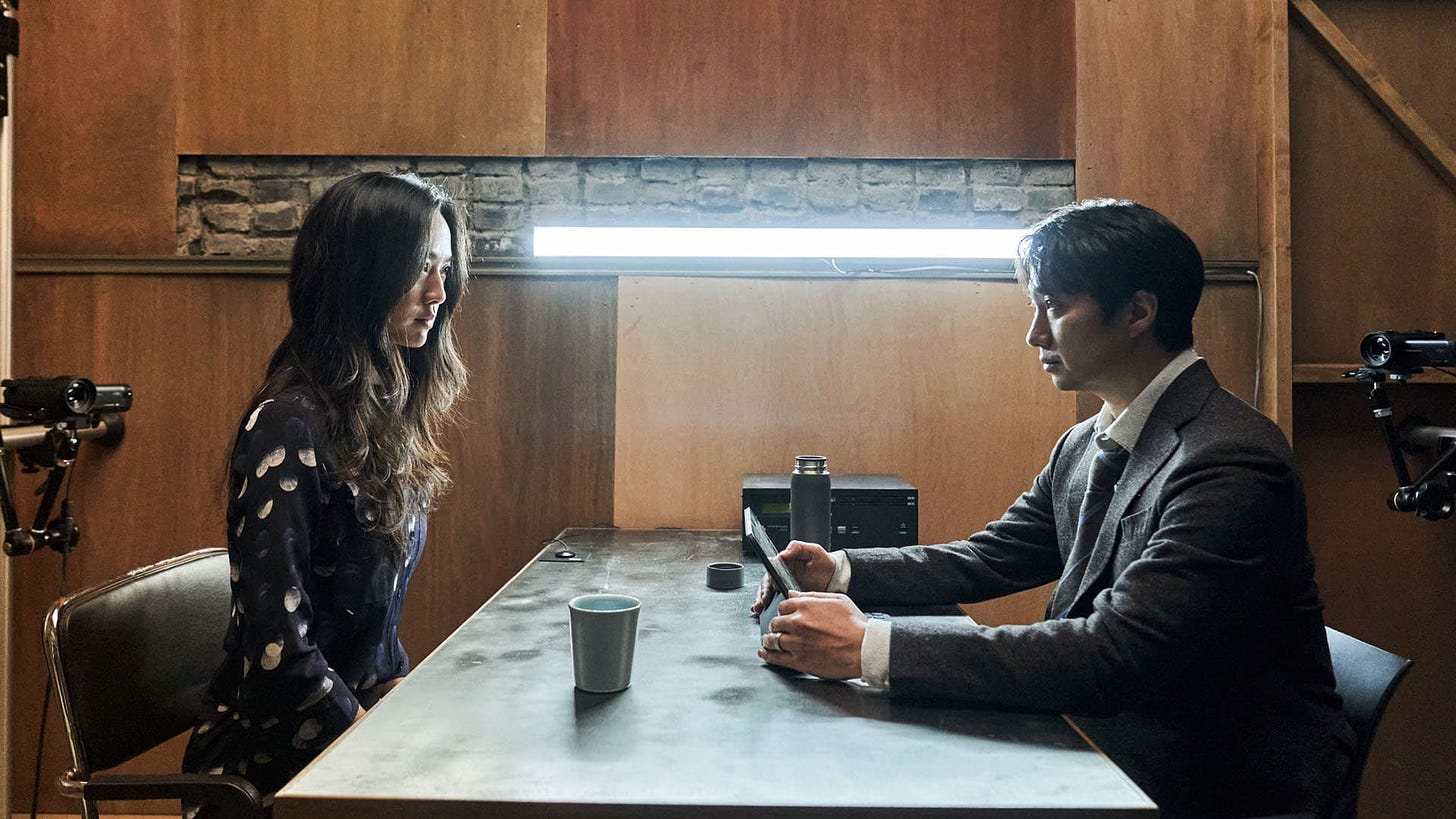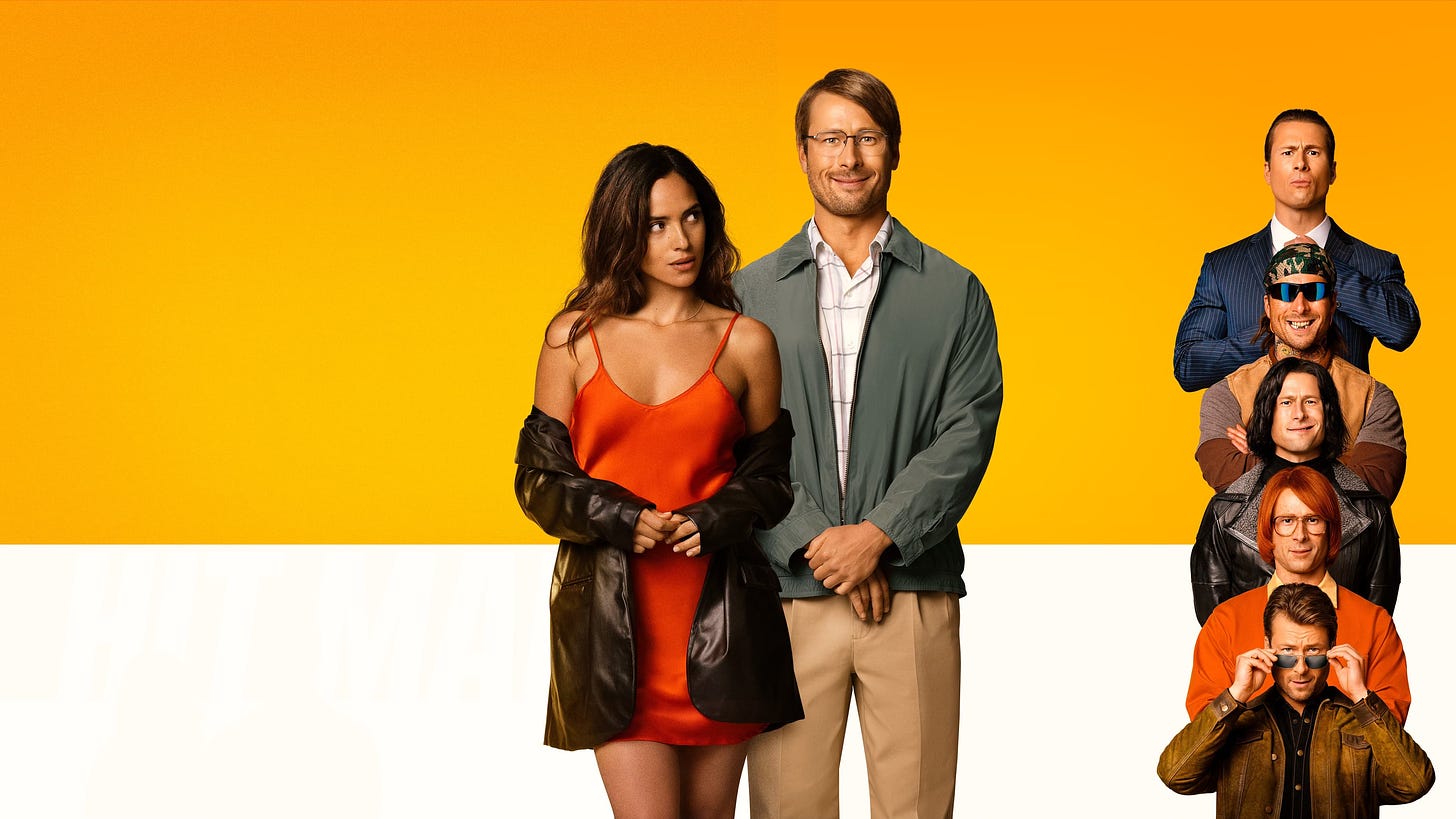
Smartphones and cinema have long endured a frosty relationship. Like divorcees at a parents’ evening, they begrudgingly coexist while barely acknowledging the other’s presence.
In truth, the hostility is one-sided. An alien studying human culture solely through contemporary movies could be forgiven for thinking smartphones are peripheral to our lives, a helpful gadget used occasionally, like a SatNav or an Airfryer.
The reality — that smartphones are a symbiotic (or parasitic, depending on who you ask) feature of our daily lives — is rarely reflected on the screen. Instead, our cinemas are filled with a glut of period pieces and contemporary films that conveniently sidestep the issue. Modern cinema exists in worlds defined by perpetual ‘no signal,’ ubiquitous flip phones, and suspiciously healthy relationships with technology.1
Does this matter? After all, movies do not have to be set in the present to be about the present. A romance between aristocrats in 1800s England can teach us just as much about human desire as one between tech workers in 2020s Manhattan.
Even for those films that are set in the present, not ALL elements of daily life have to be shown on screen. I’m perfectly happy not seeing my protagonists go to the bathroom, deworm their cat, or scratch their arse. Why should smartphone use be any different?
Well, unlike arse-scratching or cat-worming, smartphone use has become one of the defining elements of the modern experience.
There’s been much handwringing about how movies are dying, how they’re no longer central to the culture. If cinema is to reclaim its relevance, it needs to embrace the world as it is, not just as it wants it to be. As I wrote the other day, many of the great films of the New Hollywood era were set contemporaneously. Likewise, 1999 — widely considered one of the best years of American cinema — saw a spurt of films wholeheartedly confront the spiritually crushing, emasculating, monotonal convenience of cubicle life (e.g., The Matrix, Office Space, Fight Club, and Being John Malkovich).
The cat is out of the bag: phones are part of our lives. A cinema that continues to hide from this reality will increasingly seem like a relic to generations who quite simply cannot imagine their lives any other way.

So, why aren’t we seeing more smartphones on the screen?
The most commonly raised objection goes something like this: Drama is born from friction, and smartphones embody our modern obsession with making life frictionless. With information, relationships, transport, food, and shopping just a swipe away, we’ve built a society around ease of access. If drama stems from the tension of someone wanting something they cannot easily obtain, it’s no surprise that filmmakers are wary of inserting a “get anything, anywhere, anytime” device into their movies.
After all, what fun would After Hours (1985) be if Paul could order an Uber home? Where would the bittersweet finality of Lost in Translation (2003) be if Bob and Charlotte could hop on a Zoom call after they’d left Tokyo? How would Home Alone (1990) even happen if Kevin could WhatsApp his Mum when he realised he’d been abandoned?
Can you spot the flaw in this argument? Yes, drama revolves around characters striving for something they cannot easily get, and yes, smartphones make life more convenient. But when a character yearns for some specific thing — a plane ticket, a treasure, the Infinity Stones — this is usually a mere proxy for a more profound desire: love, revenge, status, happiness, peace of mind, power. Uber, Doordash, and Deliveroo will never be able to deliver those.
We are as driven by the same timeless desires as we were in the age of Homer. The stakes remain as human as they’ve ever been. Are we any less lonely than our ancestors? Are we any less anxious? Do we desire love, connection, and status any less than we used to?
In fact, smartphones can make these fundamental human needs harder to obtain. They can amplify loneliness, heighten anxiety, and fuel the fear of missing out. They can push us to compare ourselves with others. They can lead us to prioritise comfort over experience and digital proxies over the real thing.
To dismiss smartphones as bad for storytelling because they make our lives practically easier overlooks how they can simultaneously make our lives existentially more complicated. This has long been the realm of science fiction, from the numbing effects of Soma in Huxley’s Brave New World to the beautiful delusion of The Matrix’s blue pill. But creative storytelling opportunities exist outside the realm of dystopia. For better or for worse, smartphones have completely transformed how we work, relate, and connect. What an opportunity for drama!
If a writer struggles to create tension simply because smartphones exist, perhaps they aren’t that imaginative a writer.

“OK,” you may be saying, “that’s all well and good - maybe conceptually there are lots of dramatic possibilities, but you need to be able to actually show them on the screen.”
Fair enough.
There is a case to be made that someone using a smartphone is simply uninteresting to watch. ‘Normal’ (i.e., non-smartphone-based) human interaction is bursting with variables: fluctuations in voice, body language, pace, tone, and volume. They’re a dance, a wrestle, a game. Screen-based communication strips this down to thumbs, fingers, and screens. It’s harder to make exciting and far easier to make dull.
This is why everyone in movies still speaks on the phone all the time. In reality, I wager that you can count on one hand the non-work calls you’ve made recently that weren’t to your partner, your kids, or your parents. Something tells me that iconic lines like “I’m talking to an empty telephone,” and “Did you get my flowers?” wouldn’t have the same effect delivered via iMessage.
Once again, this critique suffers from a lack of imagination.
For one, it’s not an either-or calculus: a film that incorporates smartphones doesn’t have to do away with interpersonal communication.
More fundamentally, the idea that using a smartphone is visually dull is a nihilistic take on the power of movies to make seemingly boring things interesting.
This is, after all, the medium that can extract 90 minutes of knuckle-whitening drama from 12 sweaty men having a conversation. It can create dizzy tension from a man with a broken leg looking through a telescope. A CHILDREN’S FILM can achieve huge commercial success with a near-silent 35-minute opening sequence of a robot collecting rubbish.
The point is, if we’re invested in the characters and the stakes are clear, movies can make nearly anything exciting. Why must this suddenly change as soon as someone starts tip-tap-tapping away on a smartphone?
An example: Park Chan-wook’s Decision to Leave (2022) is one of the most visually striking movies of the decade. A romantic noir set in the modern era, Chan-wook fills his story with digital touches: GPS data and voice notes are integral to the film’s plot, a translation app bridges and separates the simmering relationship between its Chinese and Korean protagonists, and text conversations are brought to life by striking stylistic decisions such as POV shots from within the phone screen.
These uses of technology aren’t arbitrary. They extend and shape the film’s characters and story. “The foundation of a texting scene comes down to all of the emotions within the person: excitement, curiosity, being flustered—it’s all seen on the face,” said Chan-wook to The Film Stage’s Caleb Hammond. “At one important moment we use an eccentric POV shot where it almost seems like you’re inside the phone. We used this only a limited number of times. The idea is that he is texting toward the person inside this phone, the receiver of the text; this is to portray that the eyes of the man are not actually on the phone, but are facing the woman that he is texting.”
Alternatively, take Richard Linklater’s Hit Man (2024). Its standout scene features its two protagonists holding contradictory conversations simultaneously. One, held out loud, is a performance for the eavesdropping cops. The second unfolds via a series of Apple Notes, hurriedly typed by Glenn Powell’s hunky Gary. There’s a pacy fluidity to the scene — they prowl around the room while Gary animatedly conducts proceedings — that would have been stymied had they been hunched over a desk scribbling on paper.

So, if smartphones are more cinematic than we think, why aren’t we seeing more of them in movies?
There is a valid concern that smartphones time-stamp films, puncturing the timeless quality movies can otherwise achieve, even if they feature other period details. Seeing a character using an iPhone 3G isn’t a rich historical detail like Michael’s Alfa Romeo in The Godfather. Unlike classic cars or vintage fashion, outdated tech on-screen seems to trigger our commercial impulses, not our artistic or historical ones. It activates our obsession with new, new, new, causing us to roll our eyes at technology we would have marvelled at just a decade ago. This is why, strangely, a character using a Windows phone in a 2010s movie can feel more dated than someone using a rotary phone in the 1970s.
But perhaps older smartphones feel so dated on screen because they are handled so awkwardly. If we saw them more often in films, we might embrace them as part of the language of cinema rather than turning our nose up at them as outdated relics.
More broadly, I suspect that there is a sense, particularly among older filmmakers, that smartphones are just a bit… eurgh. There’s a moral dimension to it, a feeling that they somehow erode the purity of what’s on screen.
I’ll admit that I sometimes wonder if I feel the same way. I certainly don’t think that all modern films should somehow be ‘about’ smartphones, nor that every filmmaker should start incorporating them. I think it’s for the best if Scorsese rounds out his career without ever including a character browsing TikTok.
But I do think that, in the hands of a talented filmmaker, smartphones offer fresh ways of exploring and dramatising how we interact with our world and each other. Not all films with smartphones have to be sweeping existential meta-commentaries on our relationship with technology. Instead, they can simply become another tool in the toolbox.
Anyway, I’m off to scroll Letterboxd.
If you enjoyed reading and would like to support my work, please consider buying me a ‘coffee…’
If you didn’t enjoy it - what are you still doing here!
Cell Phones are Useless (TV Tropes) | No Signal (richfofo)



If you haven't watched it yet, Every Frame a Painting does a great video about texting in movies: https://www.youtube.com/watch?v=uFfq2zblGXw
You make some interesting points! I agree that modernity dates a film, whereas vintage props, costuming and techniques can give it an edge. Imagine seeing vapes and Airpods in a film decades from now, for example. Smartphones, however, do make things awfully convenient - which makes them a terribly inconvenient plot device.
This is why I think films like Host (2020) are particularly clever, being entirely shot and set in Zoom during the pandemic. While it does date the film, it leveraged the most relatable aspects of that period to reach a wider audience while simultaneously tapping into our most ancient fears.